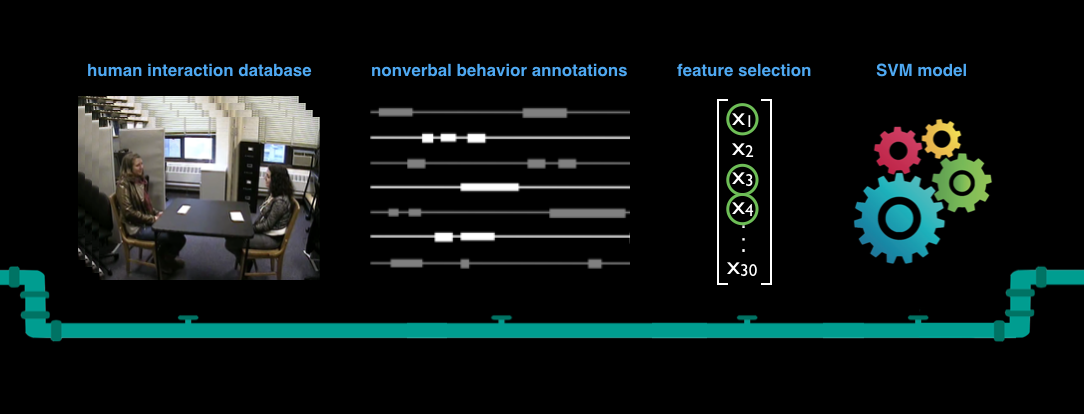Computational Trust Model
We developed a computational model capable of predicting—above human accuracy—the degree of trust a person has toward their novel partner by only observing the nonverbal behaviors expressed in their social interaction.
In our prior work, we identified a set of negative nonverbal behaviors—face-touching, arms-crossed, leaning backward, and hand-touching—indicative of lower levels of trust. We continued our investigation into trust-related nonverbal signals and found a set of positive behaviors—leaning forward, smiling, arms in lap, and arms open—indicative of higher levels of trust.
We harnessed the power of machine learning algorithms to build temporal models, and by interpreting the resulting learned structure of our hidden Markov models (HMMs), we discovered that the sequence of nonverbal behaviors a person emits provides further indications of their trust orientation toward their partner.
In summary, these discoveries shaped the feature engineering process in designing a final trust prediction model. By observing the frequencies, durations, joint appearances, and sequences of the trust-related behaviors, our support vector machine (SVM) model achieved a prediction performance more accurate than human judgment.
Publications
- J.J. Lee, W.B. Knox, J.B. Wormwood, C. Breazeal, & D. DeSteno (2013). Computationally Modeling Interpersonal Trust. Frontiers in Psychology.
- Jin Joo Lee. Modeling the Dynamics of Nonverbal Behavior on Interpersonal Trust for Human-Robot Interactions. Masters Thesis, Readers: Cynthia Breazeal, Rosalind Picard, David DeSteno.
- J.J. Lee, W.B. Knox, and C. Breazeal. Modeling the Dynamics of Nonverbal Behavior on Interpersonal Trust for Human-Robot Interactions. Association for the Advancement of Artificial Intelligence (AAAI): Spring Symposium on Trust and Autonomous Systems.



